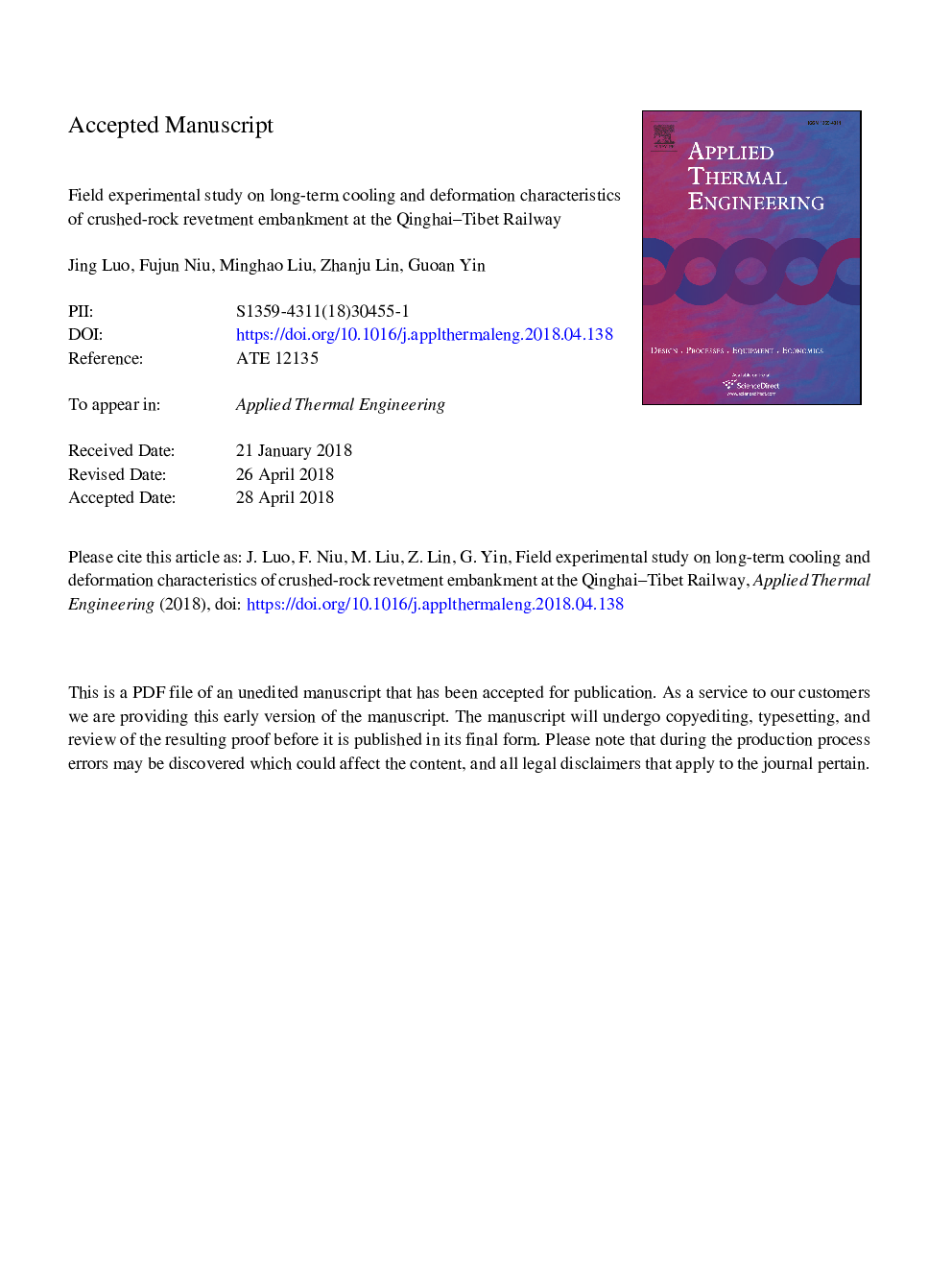| Article ID | Journal | Published Year | Pages | File Type |
|---|---|---|---|---|
| 7045123 | Applied Thermal Engineering | 2018 | 26 Pages |
Abstract
Crushed-rock revetment embankments (CRRE) were the most commonly used structure in the construction of the Qinghai-Tibet Railway, and also is a main strengthening measure at the later period's maintenance. Numerical and short-time field monitoring results have confirmed the cooling effects of CRRE, but studies regarding the long-term embankment thermal regime and deformation are still required to fully evaluate their performance. This paper discusses the cooling effects and embankment settlement of a CRRE at the Qinghai-Tibet Railway by examining the ground temperatures and embankment deformation between the years of 2003 and 2014. The results indicate that the crushed-rock layer has lowered the permafrost temperatures beneath the embankment and promoted permafrost aggradation. The estimated annual heat budget of the permafrost beneath the embankment was negative during the studied time period, indicating the sustained cooling performance of the CRRE. Furthermore, although the embankment shoulders experienced settlement, this settlement was smaller than that of a traditional embankment with normal gravel soil fills. This study confirms the utility of the CRRE as an effective design and maintenance measure for roadbeds in warm permafrost regions.
Keywords
Related Topics
Physical Sciences and Engineering
Chemical Engineering
Fluid Flow and Transfer Processes
Authors
Jing Luo, Fujun Niu, Minghao Liu, Zhanju Lin, Guoan Yin,
